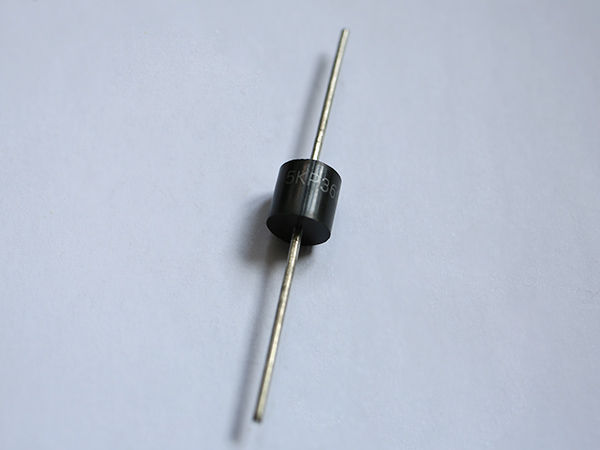Published time:2022-06-28 traffic:
Semiconductor diodes work mainly by means of PN junctions. The point contact type and Schottky type, which are inseparable from the PN junction, are also included in the range of general diodes. Including these two models, according to the characteristics of PN structure, crystal diodes are classified as follows:
Point contact type
The point contact diode is formed by pressing a metal pin on a single crystal of germanium or silicon material, and then by the current method. Therefore, its PN junction has a small electrostatic capacity and is suitable for high-frequency circuits. However, compared with the surface junction type, the point contact type diode has poor forward and reverse characteristics, so it cannot be used for large current and rectification. Because the structure is simple, the price is cheap.
Surface contact type
The PN junction of surface contact type or area type diode is made by alloy method or diffusion method. Because the PN junction area of this diode is large, it can withstand large current, but the inter electrode capacitance is also large. Such devices are suitable for rectifying, but not for high frequency circuits.
Bond type
The bond type diode is formed by fusing gold or silver filaments on a single crystal of germanium or silicon. Its characteristics are between the point contact type diode and the alloy type diode. Compared with the point contact type, although the PN junction capacity of the bond type diode is slightly increased, the forward characteristic is particularly excellent. It is mainly used for switching, and sometimes it is also used for detection and power rectification (not more than 50mA). Among the bond type diodes, the diode fused with gold wire is sometimes called gold bond type, and the diode fused with silver wire is sometimes called silver bond type.
Alloy type
A PN junction is formed on a single crystal wafer of n-type germanium or silicon by adding a metal such as alloy indium and aluminum. Small forward voltage drop, suitable for large current rectification. Because of its large electrostatic capacity when the PN junction is reversed, it is not suitable for high-frequency detection and high-frequency rectification.
Diffusive type
In a high-temperature p-type impurity gas, a single crystal wafer of n-type germanium or silicon is heated so that a part of the surface of the single crystal wafer becomes p-type, thereby forming a PN junction. Because the forward voltage drop of PN junction is small, it is suitable for large current rectification. Recently, the mainstream of using high current rectifiers has shifted from silicon alloy type to silicon diffusion type.
Table type
Although the manufacturing method of the PN junction is the same as that of the diffusion type, only the PN junction and its necessary parts are retained, and the unnecessary parts are corroded with drugs. The rest of it is named after its appearance. The mesa type produced in the initial stage is made by using the diffusion method for semiconductor materials. Therefore, this mesa type is called diffusion mesa type. For this type, it seems that there are few product models for high current rectification, while there are many product models for low current switch.
Planar type
A PN junction formed by diffusing p-type impurities on a semiconductor single crystal wafer (mainly an n-type silicon single crystal wafer) and selectively diffusing only a part of the p-type impurities on the n-type silicon single crystal wafer by the shielding effect of the oxide film on the surface of the silicon wafer. Therefore, there is no need for the drug corrosion effect to adjust the PN junction area. Because the semiconductor surface is made flat, it is named. In addition, the PN bonded surface is generally recognized as a type with good stability and long service life because it is covered by an oxide film. At first, the semiconductor material used was formed by epitaxial method, so the planar type was also called epitaxial planar type. For Planar Diodes, it seems that few models are used for large current rectification, while many models are used for small current switching.
Schottky barrier
The basic principle is: on the contact surface of metal (such as lead) and semiconductor (n-type silicon wafer), the formed Schottky is used to block the reverse voltage. There is a fundamental difference between the rectifying principle of Schottky and PN junction. The withstand voltage is only about 40V. Its specialty is that the switching speed is very fast and the reverse recovery time TRR is particularly short. Therefore, switching diodes and low-voltage high current rectifying diodes can be manufactured.

Jiangsu Shunye Electronics Co., LTD
Company address:No. 18, Changfeng Road, Rulin Industrial Park,Jintan District, Changzhou City, Jiangsu Province, China Wechat
Wechat
 Mobile station
Mobile station